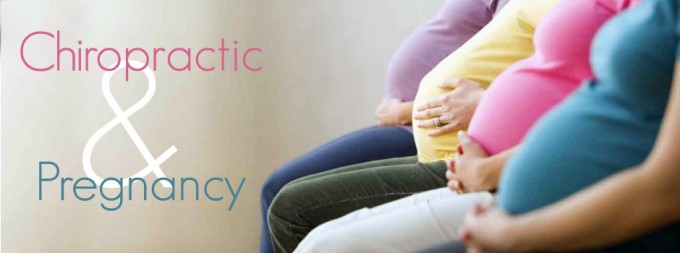 Your Body, Your Baby
Your Body, Your Baby
If you are pregnant, one of the best things you can do is see a doctor of chiropractic. Chiropractic care provides so many things a pregnant body needs: a flexible and balanced spine, hips and pelvis; internal organs without postural stress and freedom from nerve stress—all essential for a healthy pregnancy and delivery.
Along with a better diet, exercise and avoiding drugs, alcohol and cigarettes, chiropractic care should be an essential part of a pregnant woman’s healthcare regimen.
What Does A Doctor Of Chiropractic Do?
Carol Phillips, DC, who specializes in the care of pregnant and birthing mothers says, “So many women who received care during pregnancy say to us: ‘How in the world do other women get through pregnancy without [chiropractic] adjustments?’”
A pregnant woman needs to have her body as healthy and strong as possible in order to handle the rigors of pregnancy and childbirth. Chiropractic care will help ensure that all body systems function properly, especially the reproductive system which includes the uterus, ovaries and related organs and structures so essential for a healthy pregnancy. If the body structure is causing the slightest nerve interference to these systems it could adversely affect the mother and the developing fetus. Your chiropractor will examine your body for distortions known as subluxations that cause nerve stress. If your chiropractor finds subluxations in your body he/she will correct them with a chiropractic adjustment.
Drugless Healthcare
Another great reason for chiropractic care during pregnancy is that it is drugless. Drugs, whether prescription or over-the-counter, can harm the growing fetus. There is no such thing as a safe drug: It is…virtually impossible to specify any drug that will not result in an increased frequency of congenital malformations when administered, in a certain dose to a sufficiently large panel of different laboratory animals.1
No drugs should be prescribed during pregnancy without weighing the maternal need against the risk of fetal damage.2 Antibiotics (including tetracycline), aspirin, alcohol, cigarettes, marijuana and cocaine, even cough syrup and cold and flu medications, have been linked to fetal damage and miscarriage.3
Diagnostic Dangers
No proper studies have been done to determine if ultrasound has adverse effects on the growth and development of children exposed in utero.4 Ultrasound has also been associated with a symptom of possible neurological damage.5 In addition, the value of electronic fetal monitoring has been seriously questioned as to safety and efficacy.6
Robert Mendelsohn, MD stated that pregnant women should “stay away from X-rays, diagnostic ultrasound, doctor-prescribed medication, and every other form of dangerous obstetrical intervention.”7
 Can Chiropractic Help?
Can Chiropractic Help?
Chiropractic care may help maintain pregnancy, control vomiting, deliver full-term infants with ease and produce healthier infants.8 Chiropractic has demonstrated success with back pain,9 premature contractions10 and back labor.11
One case of a woman experiencing premature contractions (32 weeks) with severe endometriosis was told she would never carry a baby to term. At the hospital she received chiropractic care and the contractions stopped. After leaving the hospital, she continued care and had a normal labor and delivery at 40 weeks gestation.12
Low Back Pain
It has been observed that 57% to 69% of pregnant women suffer from low back pain. In one study,17 pregnant women under chiropractic carereported an original pain score of 5.9.After chiropractic care, they reported a pain score of 1.5.13
Avoid Caesarean Section
A 29-year-old pregnant woman with lower back pain who had two prior Caesarean deliveries began chiropractic care in the hope that she could have a natural childbirth. Her lower back pains ameliorated and she was able to have a vaginal birth.14
More Benefits
Practitioners have observed: Manipulation can be of great value in normalizing the body functions of women with problems of pregnancy such as toxemia.15 Manipulative therapy … shortens labor by 50 to 60% and lessens medication requirement by at least 50%. Postpartum depression is a rarity in patients receiving … manipulative therapy.16
The Webster Technique
Chiropractic has been able to correct breech presentations in which the baby isn’t positioned properly for birth. Developed by the late Larry Webster, DC, the Webster Technique has been very successful in correcting breech presentations. In a survey of nurse-midwives, 93.9% recommended patients to alternative healthcare providers. Among those, 57.3% referred women to chiropractors.17
A 28-year-old female was 34 weeks pregnant with a breech presentation. Evaluation of the patient on the subsequent visit showed normal (head) presentation. The patient’s nurse-midwife confirmed the conversion from a breech position to a cephalic position.18
FAQ Regarding Chiropractic & Pregnancy
Is chiropractic care safe in pregnancy?
Yes. Chiropractors are trained in adjusting pregnant women.
How late in pregnancy is it possible to get an adjustment?
Patients have received adjustments even during labor.
Do I have to have a problem in pregnancy to see a chiropractor?
Not at all. Periodic chiropractic checkups during pregnancy should be as common as periodic weight checkups.
Can spinal care help postpartum depression?
Yes. For years chiropractic’s beneficial effects on emotional stress and personality have been noted.19
For an appointment at Performance Chiropractic, call us at (661) 942-5000.
References
- Beeson PB, McDermott W. (Eds.). Cecil – Loeb Textbook of Medicine (13th Ed.). Philadelphia: W.B. Saunders Co. 1971:16.
- Vaughan VC, McKay RJ. (Eds.). Nelson Textbook of Pediatrics (10th Ed.). Philadelphia: W.B. Saunders Co. 1975:323.
- UNMC study links use of nonprescription cough medicine to miscarriages, birth defects. Pediatric Research. January 1998:1-7.
- Marinac-Dabic D, Krulewitch CJ, Moore Rm Jr. The safety of prenatal ultrasound exposure in human studies. Epidemiology. 2002; 13 Suppl
3:S19-22. - Kieler H, Cnattingius S, Haglund B et al. Sinistrality, a side-effect of prenatal sonography: a comparative study of young men. Epidemiology. 2001;12:618-623.
- Doppler French Study Group. A randomised controlled trial of Doppler ultrasound velocimetry of the umbilical artery in low risk pregnancies. Br J Obstet Gynaecol. 1997 Apr;104(4):419-24.
- Mendelsohn RS. The people’s doctor: A medical newsletter for consumers. 1987;8(10):3.
- Stein K. The value of chiropractic care in cases of pregnancy. ACA J Chiropractic. July 1964:19.
- Brynhildsen J, Hansson A, Persson A, Hammar M. Follow-up of patients with low back pain during pregnancy. Obstetrics & Gynecology. 1998;91(2):182-186.
- Phillips C. An effective drug-free approach to premature contractions. ICA Review. Oct 1998.
- Phillips C. Back labor: a possible solution for a painful situation. ICA Review. July/August 1997.
- Cohen E. Case history: premature labor. Chiropractic Pediatrics. 1995;1(4).
- Lisi AJ. Chiropractic spinal manipulation for low back pain of pregnancy: a retrospective case series. Journal of Midwifery & Women’s Health. 2006;51:e7-10.
14. Alcantara J, Hamel I. The chiropractic care of a gravid patient with a history of multiple Caesarean births & sacral subluxation. JVSR. March 11, 2008;1-5.
15. Reynolds JP. What is the role of osteopathic manipulative therapy in obstetric care? JAOA. 1974:74.
16. Guthrie RA, Martin RH. Effect of pressure applied to the upper thoracic (placebo) versus lumbar areas (osteopathic manipulative treatment) for inhibition of lumbar myalgia during labor. JAOA. 1982;82(4):247-251.
17. Allaire AD, Moos WK, Wells SR. Complementary and alternative medicine in pregnancy: a survey of North Carolina certified nurse-midwives. Obstet Gynecol. 2000;95(1):19-23.
18. Thomas JC. The Webster Technique in a 28-year-old woman with breech presentation & subluxation. JVSR. April 7, 2008;1-3.
19. Peterson DM. More on OMT in obstetric care. JAOA. 1975;74:597.